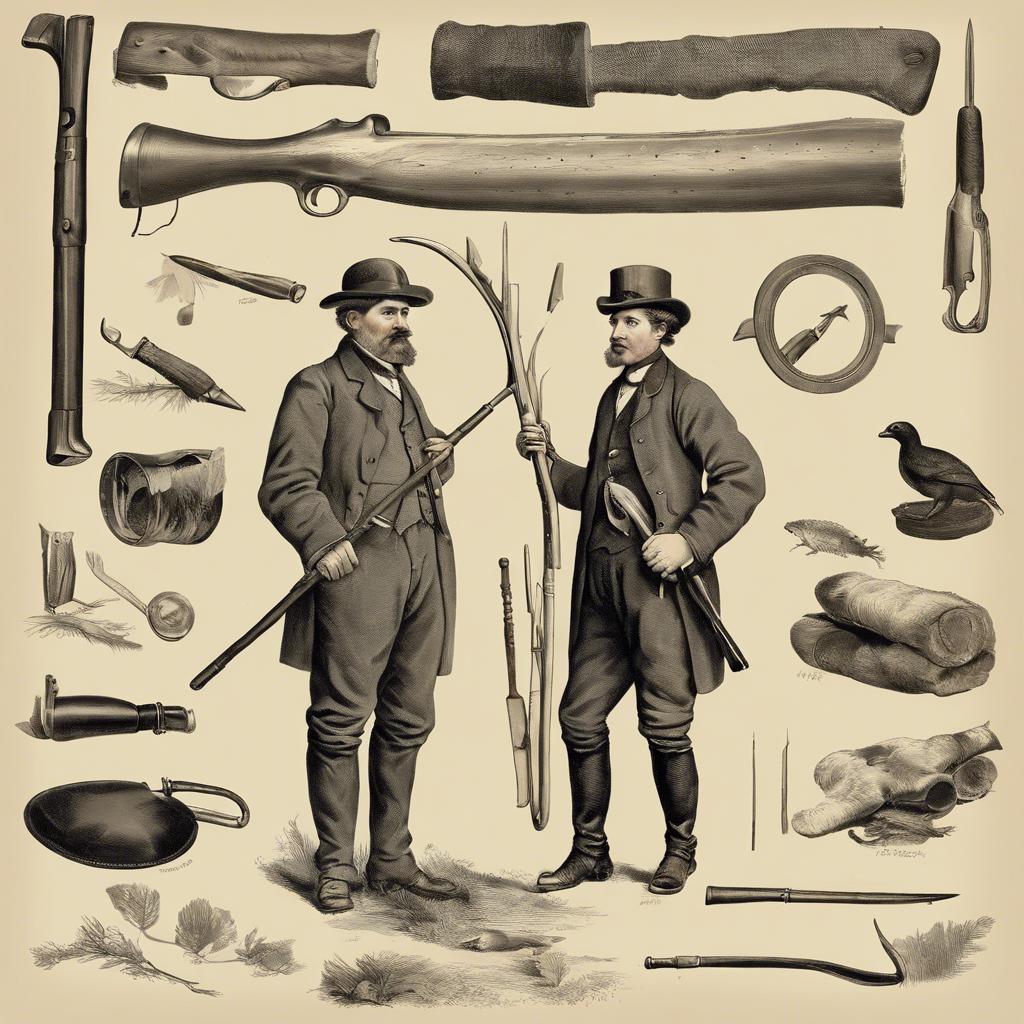In the 19th century, hunting played a vital role in both the leisure pursuits of nobility and the sustenance of rural communities. The era saw the evolution of hunting practices, with the emergence of new technologies and the establishment of formalized hunting clubs. This article explores the significance of 19th century hunting, shedding light on the customs, traditions, and values that defined this era of sport and pastime.
Step Into the World of Cheryl Bolen
Dive into the enchanting stories of love, intrigue, and elegance set in the Regency Era. Cheryl Bolen's novels offer timeless romance and captivating tales that will leave you wanting more.
Explore Cheryl Bolen's Books Now
– The Evolution of 19th Century Hunting Techniques and Tools
In the 19th century, hunting techniques and tools underwent a significant evolution, driven by advances in technology and changing societal attitudes towards conservation and hunting practices. Hunters during this period relied on a variety of tools and techniques to track and kill their prey, with a focus on efficiency and accuracy.
One of the key advancements in 19th-century hunting was the development of more precise firearms, such as the breech-loading rifle. This allowed hunters to fire more rapidly and accurately, increasing their chances of making a clean kill. Additionally, the use of new types of ammunition, such as hollow-point bullets, further improved the effectiveness of firearms in hunting.
Hunters in the 19th century also utilized a range of tools and gadgets to aid them in their pursuit of game. Items such as hunting knives, compasses, and binoculars became essential accessories for the serious hunter. Tracking devices, such as dogs trained for hunting, were also commonly used to help locate and retrieve game. the 19th century marked a period of significant innovation and refinement in hunting techniques and tools, laying the foundation for modern hunting practices.
– The Social and Cultural Significance of Hunting in the 19th Century
In the 19th century, hunting held a significant role in both social and cultural aspects of society. It was not merely a means of survival, but a popular leisure activity among the aristocracy and upper classes. Hunting expeditions were often elaborate events, with participants showcasing their skills and prowess in tracking and capturing wild game.
Key Aspects of 19th Century Hunting:
- Hunting was a symbol of wealth and status, with expensive equipment such as firearms and hunting dogs being key indicators of one’s social standing.
- The practice of hunting was not limited to the elite, as commoners also took part in this activity as a way to supplement their diets or earn additional income.
- The romanticization of nature and the thrill of the chase added to the allure of hunting, with many literary works and artworks of the time depicting the glory and excitement of the hunt.
Impact on Conservation Efforts:
- Despite the popularity of hunting in the 19th century, it also led to the decline of certain species due to overhunting and habitat destruction.
- The conservation movement began to gain momentum during this time, with the establishment of organizations focused on preserving wildlife and natural habitats.
- Hunters themselves played a crucial role in the early conservation efforts, advocating for sustainable practices and the protection of endangered species for future generations.
| Table Heading 1 | Table Heading 2 |
|————————-|————————-|
| Data 1 | Data 2 |
| Data 3 | Data 4 |
- Conservation Efforts and Wildlife Management in 19th Century Hunting Practices
In the 19th century, hunting practices were rampant and often led to the decimation of wildlife populations. However, as awareness grew about the impact of overhunting on ecosystems, conservation efforts began to take shape. Conservationists like Theodore Roosevelt and John Muir played key roles in advocating for the preservation of natural habitats and the protection of endangered species.
Conservation Efforts in the 19th Century:
- Establishment of wildlife reserves and national parks
- Implementation of hunting regulations and bag limits
- Promotion of ethical hunting practices and responsible stewardship of natural resources
Wildlife Management Strategies:
- Introduction of game laws to protect vulnerable species
- Establishment of breeding programs for endangered animals
- Collaboration between government agencies, conservation groups, and local communities
| Year | Event |
|---|---|
| 1872 | Yellowstone becomes the first national park in the United States |
| 1894 | The Migratory Bird Treaty Act is passed to protect migratory birds |
| 1899 | The Boone and Crockett Club is founded to promote conservation |
– Etiquette and Ethics in 19th Century Hunting: A Code of Conduct for Sportsmen
In the 19th century, hunting was a popular pastime among gentlemen, serving as both a sport and a means of demonstrating prowess and skill. However, with the privilege of hunting came a set of rules governing behavior in the field, known as a Code of Conduct for Sportsmen. These guidelines were put in place to ensure ethical and humane treatment of animals, as well as to maintain proper decorum among fellow hunters.
One key aspect of etiquette in 19th century hunting was the idea of fair chase, which dictated that sportsmen should only pursue game in a manner that allowed the animal a reasonable chance of escape. This meant refraining from using unfair advantages such as traps or snares, and instead relying on traditional hunting methods like shooting or tracking. Honoring the principle of fair chase was seen as a mark of a true sportsman, demonstrating respect for both the animal and the sport itself.
Another important element of the Code of Conduct for Sportsmen was the concept of responsible hunting, which encompassed a range of ethical considerations. This included respecting private property rights, obtaining necessary licenses and permissions, and adhering to seasonal hunting restrictions. Additionally, hunters were expected to make every effort to retrieve and utilize the game they killed, wasting as little as possible. By upholding these standards of ethics and etiquette, 19th century sportsmen sought to preserve the integrity and honor of the hunting tradition.
Insights and Conclusions
the 19th century was a pivotal era in the history of hunting. With the rise of hunting clubs, the establishment of game laws, and the development of more advanced firearms, hunting evolved from a necessity for survival to a beloved pastime for the leisure class. Despite the controversies surrounding hunting practices during this time, it is undeniable that the 19th century played a crucial role in shaping the modern world of hunting as we know it today. As we reflect on the lessons and traditions of this bygone era, let us continue to uphold the principles of conservation and ethical hunting practices for generations to come.


